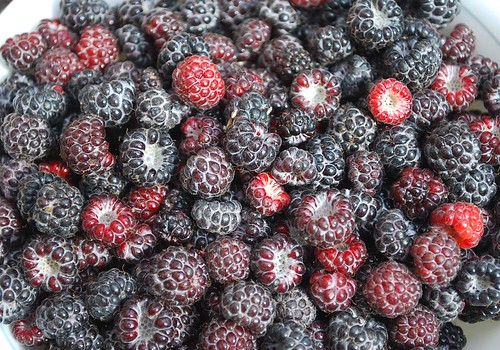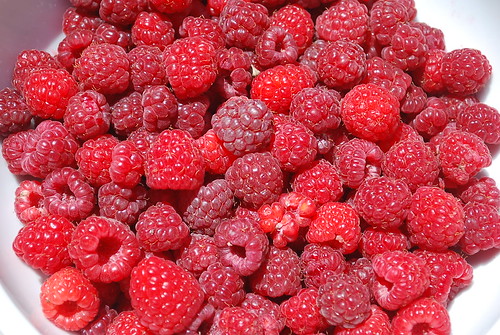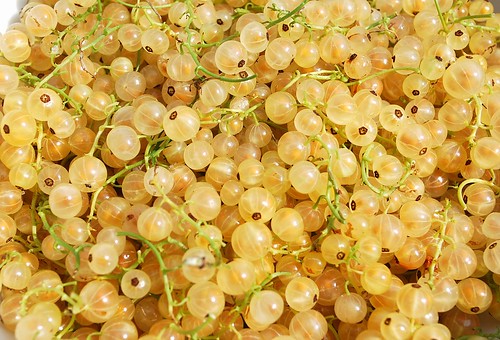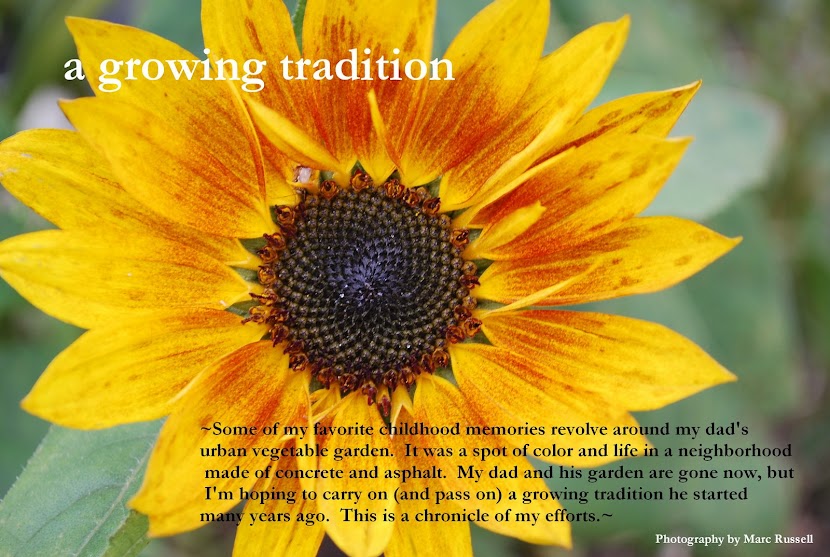
I started my second and third batches of wine a couple of weeks ago. This time around, it was a raspberry wine and a white currant wine. I was really excited to use the wild black raspberries that I had picked and froze back in June.

For my raspberry wine, I used the recipe found in Terry Garey's "The Joy of Home Winemaking," which calls from 3 - 4 lbs of raspberries for every gallon of wine. In this case, I used 2 lbs of wild black raspberries and 2 lbs of our homegrown red raspberries (which are delicious by the way).

I started another gallon batch of wine using 3 lbs of white currants that I had also picked and froze in June, again using a recipe found in Terry Garey's book. This particular recipe for currant wine called for 3 lbs of sugar, which seemed a bit much. After the must was assembled, I was a bit concerned that the finished wine might end up tasting overly sweet for my liking. (I usually like my wine very dry.) You see, during the fermentation process, the wine yeast feeds on the sugar contained within your must (which in fruit winemaking consists mainly of crushed fruit, water and a sweeter like sugar or honey), creating alcohol and releasing carbon dioxide. Once the alcohol level in your must reaches a certain level, say 14% for example, the yeast population begins to die off. Hence, if the alcohol level of your must reaches this critical point before all of the sugar has been consumed, then you may ultimately end up with a sweet tasting wine. I'm hoping this is not the case with this recipe.

The raspberry must was a brilliant blood red and very fragrant. The white currant must, on the other hand, was far from interesting in sight or smell.

The primary fermentation process lasted for about 12 days, after which the wine was siphoned into one gallon glass jugs to start the slower secondary fermentation stage, which usually lasts anywhere between 4 and 6 months. As more sugar is consumed, more alcohol is released, and more yeasts die and sink to the bottom of the jug, the wine should slowly become clearer (hopefully). During this stage, the wine is usually siphoned into new jugs several times, separating the liquid from the settled dead yeast particles, until you end up with a clear wine that is suitable for bottling.
As you can see from the picture above, by the end of the primary fermentation stage, the white currant wine took on a light yellow hue more reminiscent of white grape wine.
On a side note - I forgot to post an updated picture of my Juneberry wine, which began its secondary fermentation stage a few weeks ago. You can see how cloudy the wine is at this point, but already, it's beginning to clear. It's hard to tell by the light but I would describe the color as being ruby red.







wow.... I had never heard of black raspberries. your white currents look wonderful too. I hope the wine turns out just the way you like it. do let us know how it turned out?
ReplyDeleteThomas, We have never made wine. Yours looks lovely. I can't wait to hear how they taste.
ReplyDeleteBeautiful. I'm partial to sweet wines though. Wines that are too dry I don't like.
ReplyDeleteThis is fascinating--and your photos and so beautiful and colorful! My friend is in the process of applying for a job at a winery, and so I have recently been thinking about how wine works and how flavoring in wine works. Thanks for sharing!
ReplyDeleteNow that just sounds delicious!
ReplyDeleteMy folks used to always make wine and I thought it was a very interesting process. Never ventured into it myself but have enjoyed reading about your efforts in wine making. I hope they all turn out wonderful for you.
ReplyDeleteWow, that's fascinating!! I've always wanted to try my hand at winemaking. I've got a couple of muscadine grapevines I hope are producing next Spring and of course we have copious amounts of wild "dewberries" growing which are related to blackberries/raspberries and I'd like to them.
ReplyDeleteDo you have a book you'd recommend for beginners? You mentioned things like the 'must' and you have those fancy things on top of the bottles, that I wouldn't even know what they are called, ha. So I need to start from the beginning, LOL!
Hi Thomas, I apologize ahead of time for the long comment. I'm just glad to read about others who are making homemade wine!
ReplyDeleteI'm nowhere near an expert at this, but may I share a couple thoughts?
Your fruit to gallon ratio is very high! That's very, very good! You won't regret it, because your wine will actually taste like the fruit you're using (that's not a given)! The color of your brew,at this stage, is bold and bright! Those are very good clues. You're going to have a very flavorful wine!
I wouldn't worry about the wine being too sweet. On the contrary, I expect you to find it to be completely dry (don't forget to shake the carboy often. It may feel wrong to stir the lees, but don't worry they resettle quickly,and by shaking you're actually helping the yeast do it's job, and you're helping the CO2 escape from the wine.) I've found yeast to be very, very aggressive. I bet your fruit produced much less sugar than you expect. The high sugar additive is there, because that's probably what is required to reach the 11 -14% alcohol content of the fruit you're using. I'm betting that ifyou want sweet wine, you'll have to add sugar after the yeast is dead. By the sound of your post, you're not that interested in sweet wine. Neither are we. Although, we've come to learn that our guests like it more. It helps them overcome the strange stigma of drinking homemade wine. France is full of shit, and California needs money. That's the only reason they can charge so much for wine! I look forward to hearing how yours turns out!
Thanks Jody! I really appreciate your thoughts and reassurance!
ReplyDeleteVery interesting blog, I'll be visiting :)
ReplyDeleteThanks for sharing these great recipes!